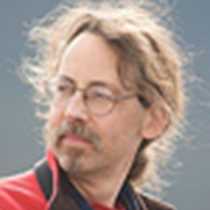Vancouver Island
Memorial Totem Pole by carver Willie Seaweed, erected 1931
We spent this day in the vicinity of the north end of Vancouver Island. Luckily, strong tidal currents shot us through Seymour Narrows, giving us extra time to explore the scattered islets that lie between Vancouver Island and the mainland.
Most of us had not been awake for too long before we spotted the trip’s second dolphin species. Pacific white-sided dolphins are easy to recognize because of their speedy, surface-active style, their general pale coloration, and their habit of living in large groups. These dolphins, often called “lags” to abbreviate their scientific name, are normally found in open ocean waters, so we on the Sea Bird, knowing that our namesake is not a highly pelagic species, always feel lucky to see them. And happy. The dolphins swam around us several times, covering the water with the splashes of their busy activity.
Moving on, we threaded narrow channels to reach Village Island. Tucked into the trees of this island stands ‘Mimkwamlis, an ancient settlement of the Kwakwaka’wakw Indians. The town was abandoned in the 60’s. We saw the weathered wood of clapboard houses, but far more moving were the giant cedar uprights and crossbeam that once supported the roof of a gukwdzi or bighouse. These massive timbers were a visible connection to the proud past of this region.
To experience the present, we moved on to Alert Bay. This town is the most significant ceremonial center for today’s Kwakwaka’wakw. The people of Alert Bay and its environs have survived much adversity. Their traditional ways were long outlawed by the Canadian government in an attempt at forced integration. Finally freed or these unjust laws, the people constructed a bighouse that saw the slow rebuilding of dance and ceremony. This house, the container of so much history and good feeling, was destroyed several years ago by arson. Undaunted, the people of Alert Bay rebuilt their house, which stands today, truly bigger and better.
We visited the U’mista Cultural Centre, a museum where ceremonial masks are displayed. These masks were illegally confiscated in 1922, after many people were arrested for maintaining their traditional ways.
Later we were invited to the bighouse itself. This house, built solely for ceremony, rarely sees outsiders. We watched as the children of Alert Bay, working hard to learn and maintain the old ways, danced in sumptuous button blanket robes or in bold theatrical masks. Some of these children, though quite young, were already very skillful dancers! They are a hopeful sign that the culture of the Kwakwaka’wakw will grow in strength.
The Pacific Northwest is rich with natural and cultural history. In times when most places seem scarred by recent change, it is gratifying to travel where so much of ancient world persists. As the long twilight rose around us, the Sea Bird turned Northwest, and headed toward even wilder parts of the Northwest Coast.
Memorial Totem Pole by carver Willie Seaweed, erected 1931
We spent this day in the vicinity of the north end of Vancouver Island. Luckily, strong tidal currents shot us through Seymour Narrows, giving us extra time to explore the scattered islets that lie between Vancouver Island and the mainland.
Most of us had not been awake for too long before we spotted the trip’s second dolphin species. Pacific white-sided dolphins are easy to recognize because of their speedy, surface-active style, their general pale coloration, and their habit of living in large groups. These dolphins, often called “lags” to abbreviate their scientific name, are normally found in open ocean waters, so we on the Sea Bird, knowing that our namesake is not a highly pelagic species, always feel lucky to see them. And happy. The dolphins swam around us several times, covering the water with the splashes of their busy activity.
Moving on, we threaded narrow channels to reach Village Island. Tucked into the trees of this island stands ‘Mimkwamlis, an ancient settlement of the Kwakwaka’wakw Indians. The town was abandoned in the 60’s. We saw the weathered wood of clapboard houses, but far more moving were the giant cedar uprights and crossbeam that once supported the roof of a gukwdzi or bighouse. These massive timbers were a visible connection to the proud past of this region.
To experience the present, we moved on to Alert Bay. This town is the most significant ceremonial center for today’s Kwakwaka’wakw. The people of Alert Bay and its environs have survived much adversity. Their traditional ways were long outlawed by the Canadian government in an attempt at forced integration. Finally freed or these unjust laws, the people constructed a bighouse that saw the slow rebuilding of dance and ceremony. This house, the container of so much history and good feeling, was destroyed several years ago by arson. Undaunted, the people of Alert Bay rebuilt their house, which stands today, truly bigger and better.
We visited the U’mista Cultural Centre, a museum where ceremonial masks are displayed. These masks were illegally confiscated in 1922, after many people were arrested for maintaining their traditional ways.
Later we were invited to the bighouse itself. This house, built solely for ceremony, rarely sees outsiders. We watched as the children of Alert Bay, working hard to learn and maintain the old ways, danced in sumptuous button blanket robes or in bold theatrical masks. Some of these children, though quite young, were already very skillful dancers! They are a hopeful sign that the culture of the Kwakwaka’wakw will grow in strength.
The Pacific Northwest is rich with natural and cultural history. In times when most places seem scarred by recent change, it is gratifying to travel where so much of ancient world persists. As the long twilight rose around us, the Sea Bird turned Northwest, and headed toward even wilder parts of the Northwest Coast.




